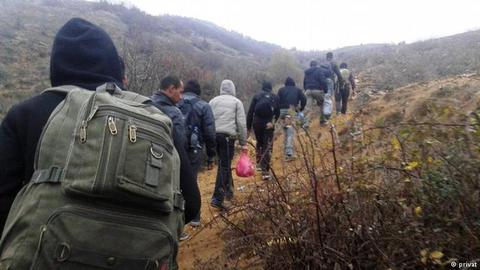Iran continues to face an unemployment crisis, the latest government figures reveal. Only around 11 million people work full-time, while at least a million households have no wage-earners at all.
A further 12.7 million hold part-time employment, meaning they work for fewer than 44 hours a week. Around a million have been temporarily laid off but hope to return to their jobs soon.
The figures, published by the Statistical Center of Iran (SCI), are based on data from the autumn of 2018.
Overall, fewer than 24 million Iranians are in employment: just 29 percent of the population. Meanwhile, the total number of households has risen to around 25 million.
If each household has an average of one person in work, this leaves at least one million without a breadwinner.
But how has the situation become so bad?
Growth of Jobless Households
SCI statistics reveal that the number of Iranian households without an employed worker has rocketed over the past 14 years.
Until 2011 the situation was relatively stable, as the number of jobholders always exceeded the number of households. However, since this time the situation has reversed.
As the above table shows, the average number of jobholders per household steadily decreased from 2005 to 2014. This means the number of jobs lagged behind the growth in population as a whole.
Over this period, the number of households grew by around 6.2 million, while the number of jobholders remained constant at around 21 million.
The data reveals a slight upturn in employment from 2016 to 2018, but joblessness remains at a critical level. In the autumn of 2018, at least five percent of households had no breadwinner.
Many factors have contributed to this crisis. One is the increase in number of retirees. Another is the unstable economic climate. The latter has led to a bubble in real estate prices and a surge in interest rates offered by banks.
Under such conditions, many people have turned away from regular employment to earn money as landlords or traders in foreign currency, promissory notes and bonds.
Others have chosen to live off the interest rates from their savings.
According to a recent SCI study, more than 39 million working-age Iranians were not seeking jobs in 2017. Around 20 million homemakers, 11 million students and more than five million others had an income without having jobs.
Of these, more than three million told pollsters that they had no need of a job. In 2005, the number was below 1.4 million.
Iran, the Regional Laggard
The situation is likely to get worse. In 2019, the economy looks set to sink further into recession, exacerbated by the banking crisis and a slump in real estate prices.
Growing inflation will drive demand for jobs as the cost of living increases, while alternative sources of income will diminish.
However, there is no prospect of growth in the job market.
Iran’s employment figures are lower than all other countries in the Middle East: a dire state of affairs in a region not known for its dynamic growth.
The diagram below illustrates the rate of employment for the working-age population (aged 15 and over) in Iran and six other large countries in the region.
Iran lies at the bottom, with an unemployment ratio of 62 percent. At the top, contrary to expectation, is Saudi Arabia. Available evidence suggests that Iran will not overtake the others anytime soon.
Employment to population ratio, 15+, total (%) (modeled ILO estimate)
Data from World Bank
Iran’s population will continue to expand for another decade or two, though the rate of growth has slowed. This will increase competition in a stagnant job market, while reducing each individual’s share of the country’s resources.
Proponents of population increase argue that more people will be needed in coming years to maintain Iran’s tens of millions of elderly people. However, we already have enough young and middle-aged people to provide support.
The problem is their unproductivity due to state mismanagement of the economy.
Related Coverage:
Revealed: Absolute Poverty in Iran, December 7, 2018
Could a 20% Salary Increase Help State Employees?, December 5, 2018
Iran Rushing Toward 30 Percent Inflation, November 27, 2018
Living on the Margins in Iran: The Rise and Fall of Khuzestan, November 2, 2018
, October 30, 2018
Runaway Inflation and the Nationwide Trucker Strike, October 4, 2018
Families and Fishermen Lose Out as Prices Rise, October 1, 2018
Living on the Margins in Iran: Bandar Abbas and Hormozgan Province, August 24, 2018
Living on the Margins in Iran: Mashhad and the Cities of Razavi Khorasan, August 17, 2018
Living on the Margins in Iran: Razavi Khorasan, July 12, 2018
Living on the Margins in Iran: An Introduction, July 11, 2018
visit the accountability section
In this section of Iran Wire, you can contact the officials and launch your campaign for various problems

























comments